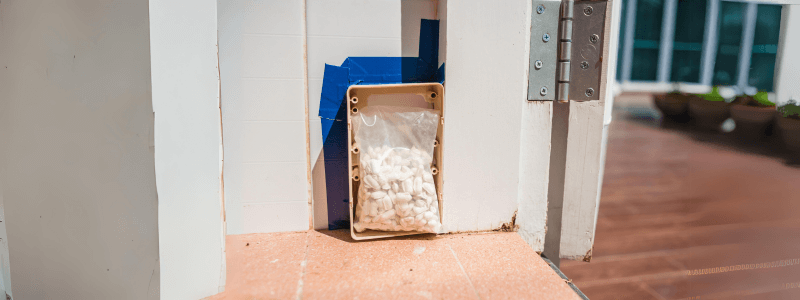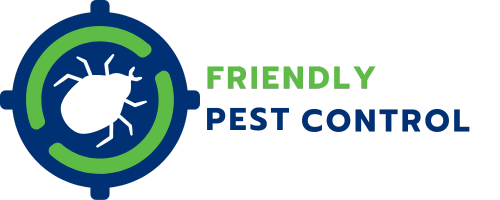Battling the Bite: Unveiling the Timeline of Termite Baiting Success
Unearthing evidence of termites in your home can be a nerve-wracking experience. The fear of extensive damage and the looming cost of repairs can leave you feeling overwhelmed. But fear not, homeowner! Termite baiting systems offer a powerful weapon in your fight against these destructive insects. However, a crucial question often arises – how long does it take for termite baiting to work?
This comprehensive guide dives deep into the world of termite baiting, exploring the factors influencing its timeline and providing valuable insights to help you navigate the process.

Understanding Termite Baiting Systems: A Strategic Approach
Unlike traditional chemical barriers that create a perimeter around your home, termite baiting systems take a different approach. Imagine a network of hidden sentries – strategically placed stations containing termite baits. These baits act as a delectable lure, attracting foraging termites with their enticing cellulose content.
The key lies in the bait’s composition. It often incorporates a slow-acting insect growth regulator (IGR) undetectable to termites. Worker termites, drawn to the feast, consume the bait and unknowingly share it with the colony, ultimately leading to their demise. This domino effect disrupts the colony’s ability to molt, effectively halting growth and reproduction, and ultimately leading to its eradication.
Factors Affecting the Termite Baiting Timeline: Patience is Key
While termite baiting offers a long-term solution, the wait for complete colony elimination can feel agonizing. Several factors influence the timeline, making it difficult to provide a one-size-fits-all answer:
- Colony Size: Larger colonies naturally take longer to succumb to the bait’s effects. Imagine a larger army requiring more resources to defeat! A smaller colony might be eliminated within a few months, while a larger one could take up to a year.
- Termite Activity Levels: The effectiveness of baiting termites hinges on their activity level. Active colonies readily discover and consume the bait, accelerating the process. Conversely, less active colonies may take longer to engage with the stations.
- Weather Conditions: Environmental factors can play a role. Colder temperatures often lead to decreased termite activity, potentially extending the elimination timeline. However, termite baiting systems are designed to function year-round, even in harsh weather.
The Baiting Process: A Step-by-Step Journey
Here’s a breakdown of the typical termite baiting process, giving you a clearer picture of the timeframes involved:
- Inspection and Assessment: Before implementing any baiting system, a qualified pest control professional will conduct a thorough inspection of your property to determine the extent of the infestation and identify the specific termite species. This initial assessment usually takes around an hour.
- Bait Station Installation: Strategically placed stations containing termite baits are installed around the perimeter of your property, typically spaced 3 meters apart. The technician will ensure minimal disruption to your landscaping. Installation can be completed within a day for a standard-sized home.
- Monitoring and Inspections: Regular monitoring is crucial for successful termite baiting. Depending on the initial assessment and activity levels, inspections typically occur every 4 to 12 weeks. During these visits, the technician will check for termite activity in the stations and refill or replace baits as needed.
- Elimination and Monitoring: Once termite activity is confirmed in the stations, the technician will replace the bait with a version containing the IGR. The worker termites will continue to consume and share the bait, ultimately leading to colony elimination. This process can take anywhere from a few months to a year, depending on the factors mentioned earlier.
- Ongoing Monitoring: Even after confirmed elimination, continued monitoring is essential to ensure the long-term protection of your home. The frequency of these monitoring visits may decrease over time, typically occurring every 3 to 6 months.
Maximizing Efficiency: Tips for a Speedy Termite Take Down
While you can’t control the intrinsic factors influencing the timeline, here are some ways to potentially expedite the process:
- Maintain Open Communication: A strong partnership with your pest control company is key. Keep them informed of any changes in activity you observe around the stations.
- Eliminate Other Food Sources: Seal up any potential cracks or crevices in your foundation, and address any moisture issues around your property. This minimizes alternative food sources for termites, encouraging them to focus on the bait.
- Maintain Patience: Remember, eradication takes time. Trust the process and the expertise of your pest control professional.
Peace of Mind Beyond the Timeline: Advantages of Termite Baiting
While the wait for complete elimination can be frustrating, termite baiting offers numerous advantages that outweigh the initial timeframe:
- Targeted Elimination: Unlike chemical barriers, which can affect non-target organisms, termite baits specifically
- Targeted Elimination: Unlike chemical barriers, which can affect non-target organisms, termite baits specifically target termites. This makes them a safer choice for properties with pets or children. (baiting termites 1)
- Long-Term Protection: Once the initial colony is eliminated, the baiting system continues to act as a preventative measure. Regular monitoring ensures early detection of any future activity, allowing for swift intervention. (baiting termites 2)
- Eco-Friendly Solution: Termite baits typically contain minimal to no harmful chemicals in the soil, minimizing their environmental impact compared to traditional chemical treatments. (baiting termites 3)
- Minimal Disruption: Bait station installation is a non-invasive process causing minimal disruption to your property and landscaping. (baiting termites 4)
- Effective for Various Termite Species: Termite baiting systems are effective against a wide range of termite species, making them a versatile solution. (baiting termites 5)
Addressing Common Concerns: Dispelling Myths About Termite Baiting
While termite baiting offers numerous advantages, some homeowners might harbor concerns. Let’s address a few common myths:
- Myth: Termite baits are ineffective.
- Reality: Termite baiting systems, when implemented and monitored correctly by a qualified pest control professional, have a high success rate in eliminating termite colonies. Studies have shown their effectiveness in various environments and against different termite species. (baiting termites 6)
- Myth: The bait stations are an eyesore.
- Reality: Termite bait stations are designed to be discreet. They are typically buried flush with the ground and strategically placed around the perimeter of your property, making them virtually undetectable. (baiting termites 7)
- Myth: The process involves harmful chemicals.
- Reality: Modern termite bait formulations contain minimal to no harmful chemicals that could pose a risk to humans, pets, or wildlife. The IGR specifically targets the termites’ biological processes, minimizing the environmental impact. (baiting termites 8)
Investing in Peace of Mind: The Cost of Termite Baiting
The cost of termite baiting can vary depending on several factors, including:
- Size and complexity of the infestation: A larger or more established infestation might require additional bait stations and monitoring visits, leading to a higher overall cost. (baiting termites 9)
- Geographic location: Prices can fluctuate based on the average cost of pest control services in your area.
- Type of termite baiting system: Different companies may offer varying baiting systems with slightly different pricing structures.
However, it’s important to consider termite baiting as an investment in the long-term protection of your property. The potential cost of repairs due to undetected termite damage far outweighs the initial investment in a baiting system. (baiting termites 10)
Partnering for Success: Choosing the Right Pest Control Company
Selecting a reputable pest control company with experience in termite baiting is crucial. Here are some key considerations:
- Experience and Licensing: Ensure the company holds the necessary licenses and certifications for termite control in your area. Opt for a company with a proven track record of successful termite baiting projects. (baiting termites 11)
- Inspection and Quote: Request a thorough inspection of your property to determine the extent of the infestation and receive a detailed quote outlining the specific baiting system recommended and the expected timeline. (baiting termites 12)
- Warranties and Guarantees: Inquire about warranties or guarantees offered by the company. This demonstrates their confidence in the effectiveness of their baiting system. (baiting termites 13)
- Communication and Transparency: Choose a company that prioritizes clear communication and keeps you informed throughout the process. You should feel comfortable asking questions and receiving clear, concise answers. (baiting termites 14)
Living Termite-Free: Life After Baiting
Once your termite problem is under control, here are some steps you can take to minimize the risk of future infestations:
- Maintain Regular Inspections: Continue with the recommended monitoring schedule established by your pest control professional. Early detection is key to preventing future problems. (baiting termites 15)
- Address Moisture Issues: Termites thrive in moist environments. Address any leaks or moisture problems around your foundation to deter future infestations. (baiting termites 16)
- Eliminate Attractants: Minimize the presence of potential food sources for termites by removing wood debris and mulch piles from around your property. (baiting termites 17)
- Regular Home Maintenance: Seal cracks and gaps in your foundation and around utility entry points. Regularly inspect crawl spaces and base
- Consider Professional Landscaping Practices: Maintain a proper barrier between soil and wood structures in your home. Consult a landscaping professional about practices that minimize termite attraction. (baiting termites 19)
By following these tips and maintaining a vigilant approach, you can significantly reduce the risk of future termite problems and enjoy lasting peace of mind.
Conclusion: A Proactive Approach to Termite Control
Termite baiting systems offer a safe, effective, and long-term solution for eliminating termite threats. While the timeline for complete colony elimination can vary, the long-term benefits outweigh the initial wait. Remember, early detection and intervention are key to minimizing potential damage. By partnering with a qualified pest control company like Friendly Pest Control and implementing a termite baiting system, you can effectively safeguard your home from these destructive pests and ensure a termite-free future.
Remember: Early detection and intervention are crucial for successful termite control. Don’t hesitate to contact a qualified pest control professional at the first sign of termite activity.
